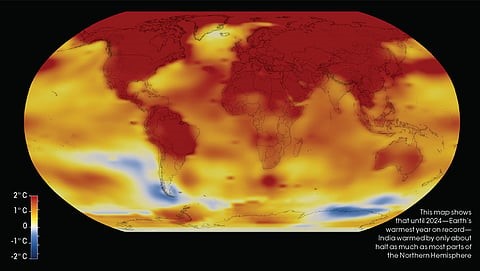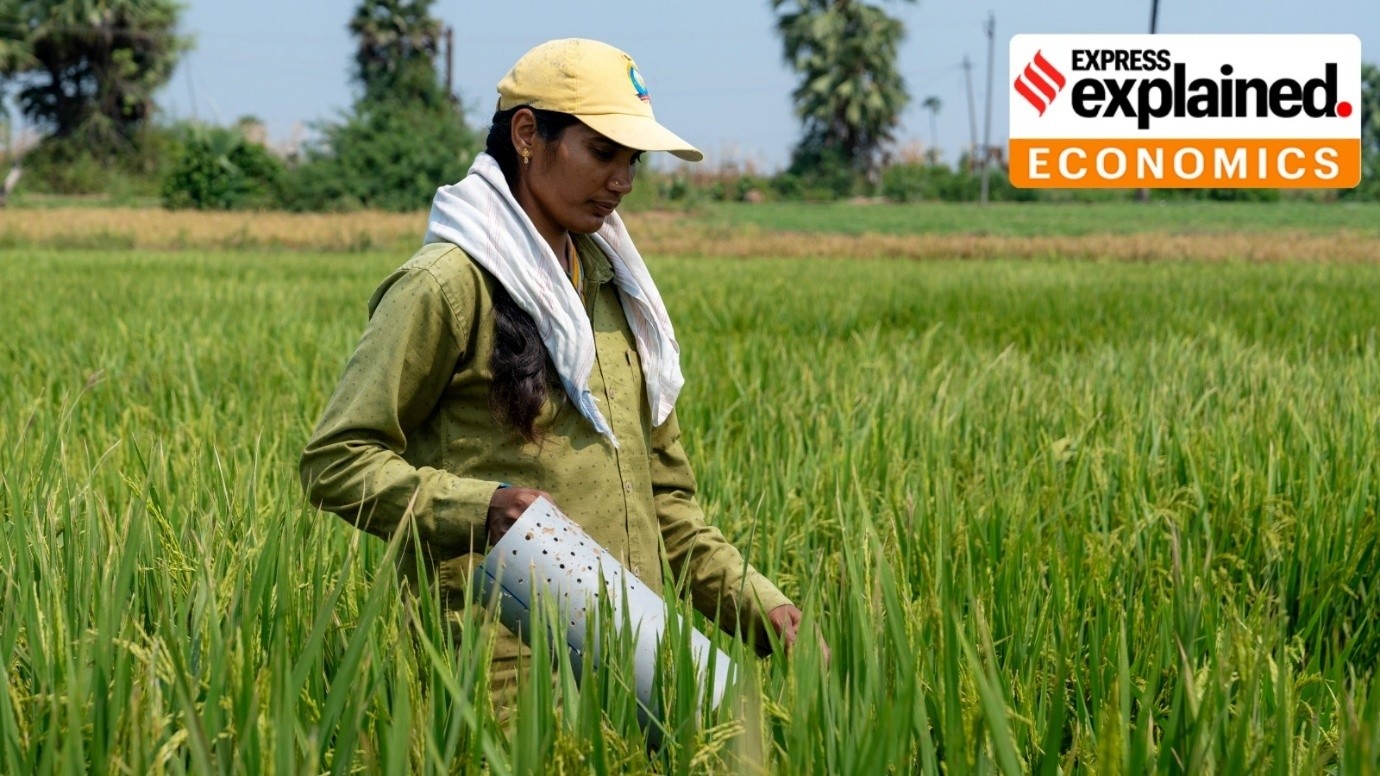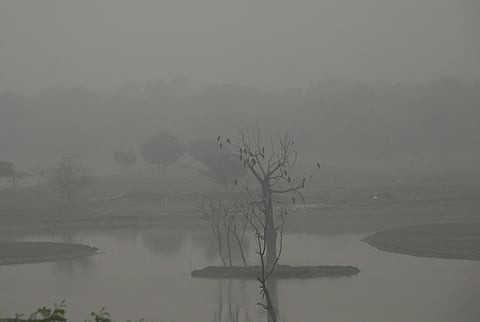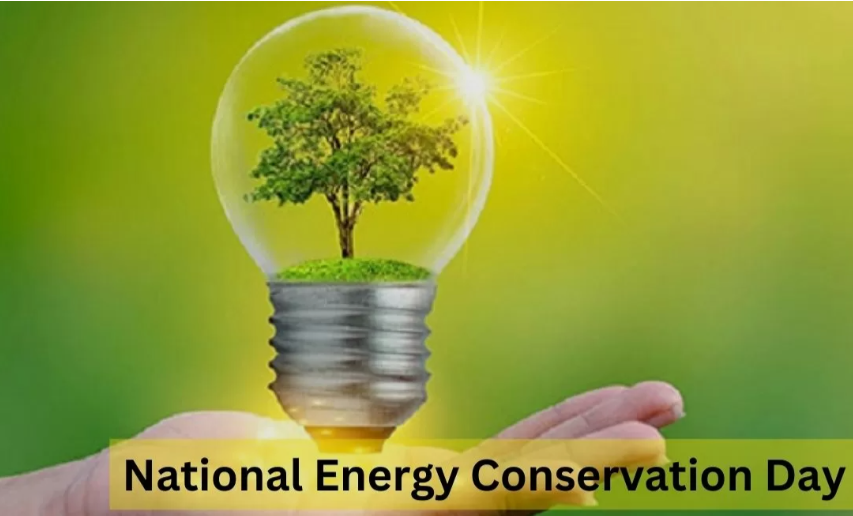




Source: DOWNTOEARTH
Disclaimer: Copyright infringement not intended.
India has warmed at a slower rate (~0.6°C since 1950s) compared to the rest of the Northern Hemisphere (~1.2°C).
At first glance this appears positive but scientists caution that it represents a paradoxical and dangerous climate trend primarily driven by aerosol pollution.
|
Term |
Explanation |
|
Aerosols |
Fine particulate matter suspended in the air; can be reflective like sulphates or absorbing like black carbon. |
|
Cooling Effect of Aerosols |
Reflect sunlight or absorb radiation in upper atmosphere, reducing heat reaching Earth's surface. |
|
Ground-Level Ozone |
Harmful pollutant formed by reaction between sunlight and nitrogen oxides or VOCs. |
|
PM2.5 |
Particulate matter smaller than 2.5 microns; deeply penetrates lungs and bloodstream. |
Aerosol Pollution
India has high levels of aerosols from fossil fuel burning, crop residue burning and industrial activities.
Aerosols
Reflect sunlight → Reduce surface temperature.
Absorb radiation (e.g., black carbon) → Warm upper atmosphere but cool surface.
Interact with clouds → Increase or reduce cloud cover, adding complexity.
COVID-19 Lockdown Anomaly
During 2020 lockdown:
25% reduction in particulate matter led to unexpected 2–4°C fall in night temperatures in Delhi.
Suggests aerosols may normally warm near-surface air while reducing sunlight.
Other Contributing Factors
Expanding irrigation → Increases local evapotranspiration contributing to surface cooling.
Stratosphere-troposphere interactions and monsoon variability may also play roles.
Lack of comprehensive India-specific data models adds uncertainty.
Aerosol Benefits
Slows climate warming.
Shields surface from radiation.
Severe Health Hazards
Responsible for 1.5–2.1 million premature deaths annually in India.
Linked to:
Respiratory diseases
Cardiovascular issues
Complications in pregnancy
Strains public health infrastructure.
Warming Acceleration Risk
Cleaning air pollution may:
Reduce aerosol-induced cooling accelerating global warming.
Increase ground-level ozone harming health and crops.
Recent studies show synergistic effects of heat and air pollution raise mortality risk significantly.
Integrated Policy Framework
Need to synchronize air quality, climate change, energy, and development policies.
Avoid siloed solutions that improve one domain but worsen another.
Technology & Innovation
Promote:
Clean energy transitions
Emission-reducing industrial processes
Nature-based solutions e.g., afforestation, biofilters
Sources:
|
PRACTICE QUESTION Q. Despite experiencing a slower rate of warming, India faces a complex climate-health trade-off due to high aerosol pollution. Examine the reasons for this paradox and discuss its implications for environmental and public health policy. 250 words |






© 2026 iasgyan. All right reserved